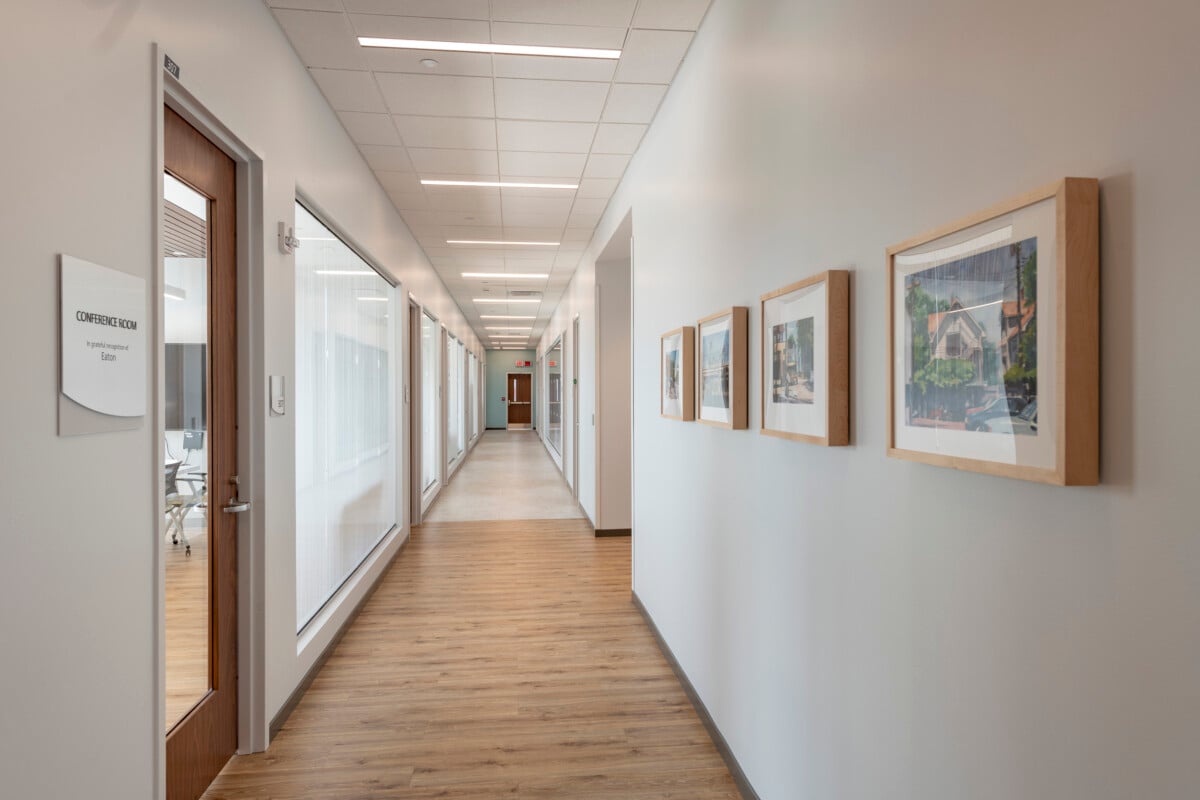Healthcare Facilities Today: Improving the Patient Experience Through Stress Free Design

An interview with JoAnna Rogers, published in Healthcare Facilities Today
There’s often the feeling of the “unknown” when entering a healthcare facility, potentially leading to a traumatic experience for many individuals. To lower the stress levels of patients and visitors, designers have started adding elements that are intrinsic to people’s well-being, making it easier to promote health and healing in these environments. However, there is still more work to do to make patients and visitors feel stress-free within healthcare facilities. JoAnna Rogers, senior healthcare designer at Moody Nolan recently spoke with Healthcare Facilities Today about how designers can tailor their designs to better support the patient experience.
HFT: How do you create spaces within a healthcare facility that promote privacy and dignity for patients while still maintaining a sense of community and connection?
JoAnna Rogers: Creating spaces within a healthcare facility that balance privacy and dignity with a sense of community and connection involves a thoughtful interior design approach. This can be achieved by providing private consultation rooms equipped with soundproofing and comforting aesthetics for sensitive discussions, ensuring that patients feel respected and heard. Simultaneously, communal areas with comfortable seating, art installations, and access to natural light can foster a sense of togetherness and support, allowing patients to connect and share their healing journeys. Additionally, flexible, multipurpose spaces that can adapt to various needs, such as support groups or educational sessions, enable patients to engage with their community while maintaining personal boundaries. This combination of private, communal, and adaptable spaces empowers patients, affirming their dignity and facilitating both privacy and connection on their healing paths.
HFT: Are there specific design elements or features that are tailored to different areas of a healthcare facility to support the patient experience? Please explain.
Rogers: In a healthcare facility, specifically those dedicated to serving underserved communities, tailored design elements are essential for enhancing the patient experience. Waiting areas should prioritize comfort, natural light, and culturally diverse décor while offering accessibility features like charging stations. Patient rooms should balance privacy and safety, with flexible layouts, adjustable beds, and culturally sensitive décor. Community spaces should be versatile and inclusive, accommodating educational workshops and gatherings that support the needs and interests of the community. Staff areas should be efficient and comfortable to support healthcare workers in delivering compassionate care.
Overall, the key is to create a healthcare environment that fosters trust, inclusivity, and cultural sensitivity while ensuring comfort and efficiency for both patients and staff.
HFT: Can you provide examples of healthcare facilities that have successfully implemented design changes to positively impact patient outcomes and satisfaction?
Rogers: Our team worked diligently on Friend Health, a health and wellness center in the historically Black neighborhood of Woodlawn in Chicago, Illinois, providing a successful example of implementing a design approach rooted in culture and community. The two-story building presents a welcoming, engaging façade to the neighborhood and offers services including primary care, dental, vision, behavioral and mental health services. Responding directly to the needs of the community, the 30,000-square-foot space’s first floor is open to the public as a community space known as the Woodlawn Community Hub, providing a home for speakers, community groups, meetings and training sessions. This puts wellness into perspective holistically, enhancing the mental, physical, and emotional health of the neighborhood.
HFT: How do you stay updated on the latest trends and research in healthcare design to ensure that your designs are aligned with best practices and evolving patient needs?
Rogers: At Moody Nolan, we are a learning organization and have a Healthcare Knowledge Manager on our teams that ensures that the firm remains at the forefront of the ever-evolving field of healthcare design. By providing continuous research and data analysis to the initial planning and programming discussions, the team ensures that the designs align with best practices and evolving patient needs. This is accomplished by actively monitoring industry news, attending industry conferences, participating in professional networks, and engaging in ongoing research collaborations with experts in healthcare design and architecture.
By staying on the cusp of industry news and innovations, we can integrate cutting-edge design concepts, emerging technologies, and evidence-based research into the firm’s projects. This proactive approach not only ensures that Moody Nolan’s designs are state-of-the-art but also positions clients to thrive in an ever-changing healthcare landscape, ultimately enhancing the patient experience and improving the overall quality of healthcare facilities. Our dedication to ongoing learning and staying connected with industry leaders exemplifies Moody Nolan’s commitment to excellence in healthcare design.
HFT: In your experience, what are some common mistakes or misconceptions about healthcare facility design that can hinder the patient experience and healing process?
Rogers: Neglecting or cutting costs when establishing an equitable staffing environment is a critical oversight. The well-being of the staff plays an indispensable role in maintaining the health and wellness of the patients. When formulating budgets and advancing business growth, it is imperative to incorporate both cost and time considerations into the design process. This approach facilitates the creation of staff-centric spaces that prioritize well-being. The lessons learned from the COVID-19 pandemic underscore the importance of this endeavor.